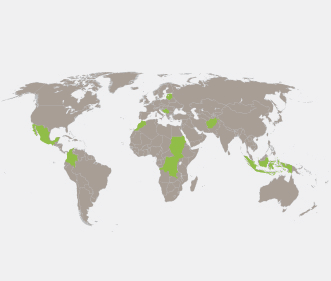In these days of sound-bites and quotes, the issue of global terrorism by non-state and state-sympathizers has created conundrums in Western Nations in communicating and devising effective approaches, responses and analysing causality. We see this in our struggles to augment and institute new legislative powers, military involvement and domestic responses to events that may or may not be terrorist motivated.
As much as we have not eliminated or eradicated crime, we have not and will not be able to eliminate or eradicate terrorism - both being idealized behaviours. But we can manage and mitigate the sub-types of terrorism in their respective contexts and settings with active advancement to analyzed definitions and responsible use of terminology. This means replacing the general term of terrorism, and its use for too many events before all of the details are known, with specific, substantially analyzed definitions.
In his book, Terrorism: How to Respond, terrorism scholar Richard English pointedly states: “We cannot adequately explain terrorism unless we are precise about what we are seeking to explain.” This is an excellent summary statement. Realizing that, while vital, this will not happen overnight as splitting the term into meaningful definitions is difficult and a many layered process, noting that ‘defining’ and ‘understanding’ are not one and the same.
The current use of the term terrorism is due a lack of analysis and has resulted in a pejorative word of condemnation of a variety of violent acts by various actors, whose motives are often not fully understood and revealed. As value-laden, loaded and as ambiguous as the term “outlaw”, it is for that reason it cannot be referenced as a technical term. Its ambiguity has led to homogenization, down to its causality, in our public discourse and has resulted in our lawmakers and those responsible for enforcement and interdiction moving further from understanding this complex phenomenon rather than achieving a concerted perspective. While scholars add a significant level of definition to the term, taking that lead alone, we run into the opposite issue - a granularity that does not resonate with practical application.
For example, terrorism expert Bruce Hoffman had argued that terrorism involves politically motivated violence or threatened violence, “designed to have far-reaching psychological repercussions beyond the immediate victim or target”, carried out by a subnational or non-state, non-uniformed organization “with an identifiable chain of command or conspiratorial cell structure” when referencing to non-state or oppositional terrorism. While this may be academically accurate in some manifestations, it stands to cloud the issue of a practical response and understanding by the general population.
Somewhere between generalization and granularity it becomes necessary to assign context and recognize that terrorism is not a movement but a tactic resulting from a social disruption rooted in political, ideological or cultural ideals. It is multi-factored, multicasual and categorically diverse in its implementation. Further to this, terrorism is not new and treating it as such only obscures a multifarious term. [Emerging in the late 1700s during the French Revolution, the term "terrorism" existed prior to this era and has persisted throughout the centuries to the present day.] Providing a definitive foundation will allow for the formulation of effective, long term responses under appropriate circumstances and conditions.
An examination of historical profiles of terrorist groups such as the IRA and Al Qaeda reveal distinct differences that indicate individualized responses: the IRA is secular and opposed government and political involvement at the state level but did not target civilians - but there were casualties as a result of their actions. Al-Qaeda is fundamentalist and does target civilians specifically to achieve their agenda. The analysis of these observations shed light in defining categorical types of terrorism and add value at the operational and preventative level, more so than an all-encompassing label. Likewise, identifying and critically analyzing the multi-causal and multi-factored nature of terrorism is important in determining patterns of these acts and what is unique in a particular context - which is why dialogue between scholars of multiple disciplines is important.
When considering responses to terrorism and terrorist attacks, we cannot adopt a singular or primary focused response, or one that is reactive, which is precisely why the above analysis is necessary. The context of military response or warfare, while politically powerful, has a limited impact as there are major differences between terrorism and orthodox warfare. Terrorism is not exacted in formal combat between states and it is not governed by the established rules of conventional warfare. To the antithesis of its intended purpose, terrorists have recognized that provoking military response and militarization has its benefits in deteriorating the “enemy” from a strategic angle and can also result in the encouragement of a stronger terrorist-sympathetic reaction and aid in recruitment.
Other examples of the response to terrorism have shown ineffectiveness where there is a lack of leadership and public policy, but augmenting the current direction with committed leadership and strong public policy is not enough. Along with the proper explanation of terrorism, definitions and classification of types and instances - the similarities and the differences - are the foundation. Beyond that, what is required is a balanced strategy that includes integrated and coordinated efforts related to disruption of financing, recruitment and radicalization, recognizing the power of timely and accurate intelligence gathering and sharing, the harmonization of securitization and preventative action with privacy and civil rights, maintaining strong credibility in the counter-terror argument by respecting orthodox legal frameworks and a democratized process, and avoiding over-militarization. There is no single method nor an all-hazards approach.
Many years ago, terrorist expert Martha Crenshaw stated that “there is no easy solution” with respect to terrorism; this still rings true. However, the quicker we move away from broad-brush terminology, single-cause assumptions and too-narrow responses, the closer we will get to measurable results and resilient securitization without sacrificing our freedoms.
In the meantime, we need to also ask if contrary actions to the above coupled with homogenization of terrorism in media and with bureaucrats and our knee-jerk reaction to prefer simple explanations and over-generalization may be our “Achilles heel” in progressing to lessons learned in the management and mitigation of terrorist activity.
_______________________________
Valarie Findlay has over decade of senior expertise in Canadian federal government and is President of HumanLed, Inc. (www.HumanLed.com). She has managed and participated in the transformation of mission critical systems, developed cyber-security strategies and frameworks and risk assessment approaches for policing, military and government departments. Currently, she is completing her dissertation on the effects of terrorism on law enforcement in Western nations in the Terrorism Studies Program at the University of St. Andrew’s.
Articles and Studies: Cyber-Terrorism and Canada’s Cyber-Security Strategy: Determining the True Cost and Value of Information, Canada’s Cyber-Threat and CIP Strategy, Validating Militarization of Law Enforcement, Cyber-Threats, Terrorism and the Counter-Terror
Tags: counter-terrorism, terrorism






 Visit the Centre for
Visit the Centre for